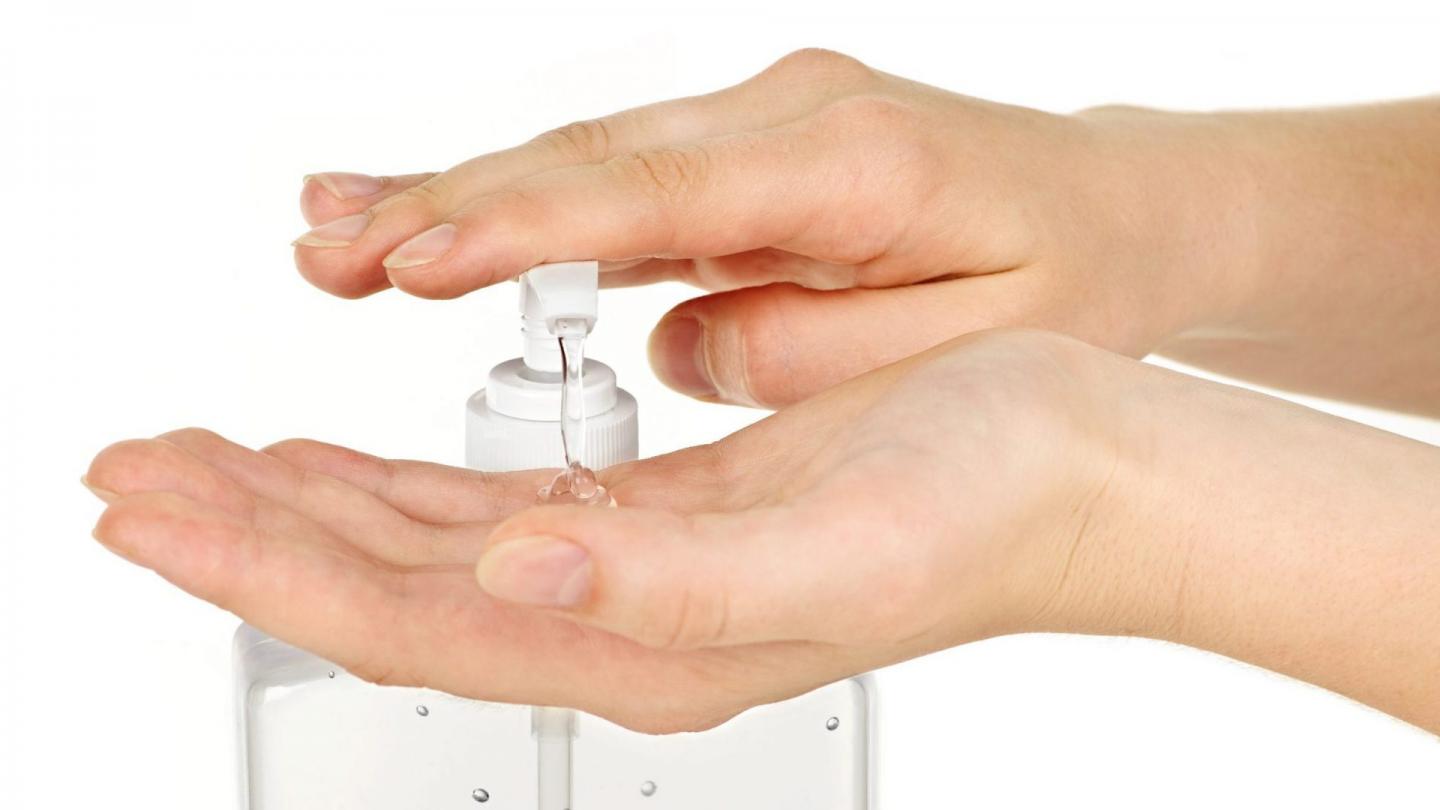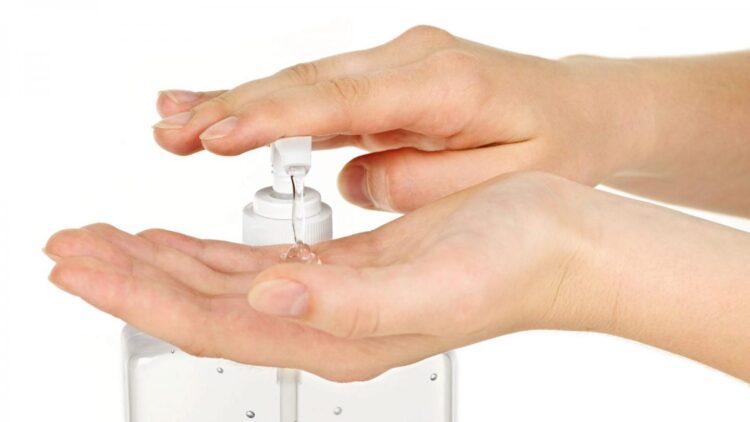‘…the general public are often unaware that such products cannot ensure disinfection and are not fit for use amid the pandemic…’ – new research describes the extent of the problem

Credit: University of Huddersfield
AN INTERNATIONAL team of pharmacy experts has researched the effectiveness of hand sanitisers in the fight against CoViD-19 and warned the public to beware of sub-standard products. They have also provided detailed “recipes” for the manufacture of effective hand sanitising gels and explained the science behind them.
There is a real risk, they write in a new article, that consumers are obtaining and using hand cleaners with low or inadequate concentrations of alcohol. These might appear similar to hand disinfectants, but purchasers are often unaware that such products cannot ensure disinfection and are not fit for use amid the pandemic.
Awareness campaigns
The authors – including the UK’s Dr Hamid Merchant, who is Subject Leader in Pharmacy at the University of Huddersfield – set out ways to minimise the risks.
They discourage the public from buying hand sanitiser from unknown or unreliable e-commerce sites.
They also state that pharmacists and retailers should advise customers over the selection of appropriate products for CoViD-19 infection control, and there should be awareness campaigns to educate the public on how to differentiate between products that are fit for general hygiene and cleansing and those that are not fit for coronavirus infection control.
The experts also urge regulatory bodies to revisit their current rules on hand sanitisers.
The new article – a collaboration between eight pharmacists based at universities in the UK, Italy and Jordan – appears in the International Journal of Pharmaceutics. Freely available online, it is titled Hand sanitisers amid CoViD-19: A critical review of alcohol-based products on the market and formulation approaches to respond to increasing demand.
The authors chart the massive spike in demand for hand sanitisers around the world, as purchasers stocked up their “pandemic pantries”. This led to stocks rapidly vanishing from the shelves, with even hospitals and other healthcare facilities running out.
The researchers also believe that that current awareness of the importance of hand disinfection means it will remain an integral part of people’s hygiene routine, even post-CoViD-19.
They investigate the scientific basis for hand cleansing and analyse when washing with soap and water – which can remove virtually all types of pathogens – is preferable to using alcohol based hand-rubs (ABHR), which are less effective when hands are extremely greasy or dirty.
“However, handwashing facilities are not readily available at work or public places. Moreover, in instances where hand sanitisation is needed more frequently, such as during frequent contact with individuals or products, the ABHRs are the most effective and convenient infection preventive measure,” states the article.
But the authors add that it is important to emphasise that ABHRs only work when used correctly.
“Considering that not all ABHR formulations are the same, appropriate labelling is important to clearly state the alcohol concentration and instructions to direct the correct dose/amount needed to achieve an adequate sanitisation. The choice of container, closure and dispenser is also vital in dispensing the correct amount of the sanitiser on each use.”
Substandard products
Substandard products are available in certain markets. If the alcohol content is not high enough, the risk for consumers is “mainly a reduced perception of product quality and attractiveness, and reduced ease of use; while overall product efficacy is maintained”. Many products in the market do not seem to comply with alcohol type and concentrations recommended by the World Health Organisation.
But much more worrying is the market presence of “hand cleaners containing substandard and/or unknown concentrations of alcohol that are not meant to be sold or used as disinfectants”.
The article includes detailed scientific data on the types and proportions of alcohol used in ABHRs and the added substances that are used to combat excessive skin dryness and to increase the viscosity of gels, because purely liquid formulations can be far less effective due to rapid evaporation of alcohol. Dr Merchant suggested that a standardised pharmacopoeial monograph with tightly-controlled specification may be a way forward.
There are also charts and descriptions that provide detailed instructions for the production of effective alcohol-based sanitisers. This will aid pharmacists and also manufacturers in fields such as brewing and perfume who have switched to making ABHRs, in response to the surge in demand.
Most of the analytical research for the article was carried out in Italy by Professor Marco Cespi’s team. The University of Huddersfield’s Dr Hamid Merchant was invited to help with the project by one of the article’s authors, the Italian scientist Dr Alberto Berardi, now based at the Faculty of Pharmacy of the Applied Science Private University in Amman, Jordan, with which the University of Huddersfield’s Department of Pharmacy has recently formed a special collaboration.
###
Media Contact
Dr Hamid Merchant
[email protected]
Original Source
https:/
Related Journal Article
http://dx.





